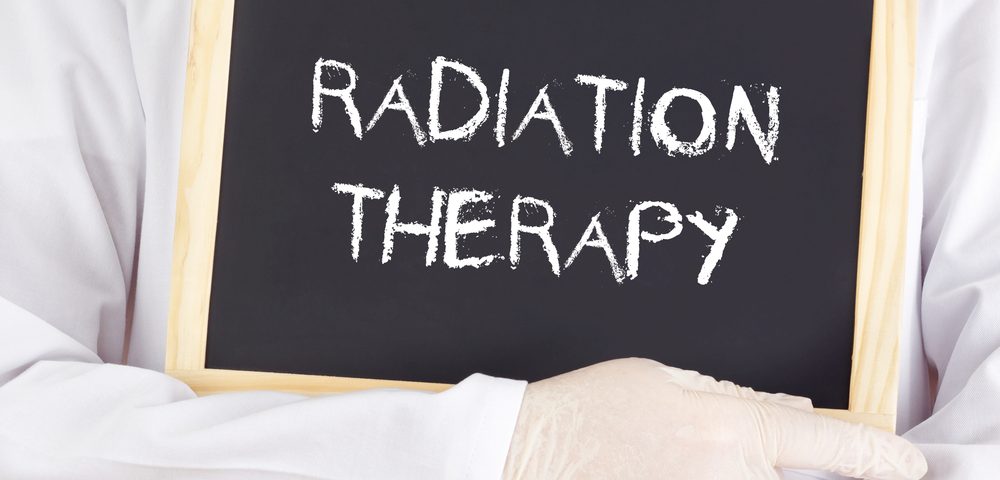A single high-dose brachytherapy treatment is as effective against localized prostate cancer as many low doses over time, and is safe, according to a study.
The research, “Favorable Preliminary Outcomes for Men With Low- and Intermediate-risk Prostate Cancer Treated With 19-Gy Single-fraction High-dose-rate Brachytherapy,” was published in the International Journal of Radiation Oncology, Biology, Physics.
Brachytherapy is a common form of radiation treatment against prostate cancer. It involves placing a sealed radiation source inside or next to a tumor, sparing adjacent healthy tissue.
Reducing adjacent healthy tissues’ exposure to radiation is particularly important in treating prostate tumors, because they are surrounded by key body structures.
Doctors can administer either low doses or high doses of brachytherapy.
Low-dose-rate (LDR) brachytherapy involves the permanent implanting of radioactive seeds in a tumor, where they release low levels of radiation for months. The high-dose-rate (HDR) therapy involves implanting a radiation seed for one treatment, then removing it. Patients usually receive HDR brachytherapy in four to nine treatment sessions, however — not one.
Although the number of sessions can be reduced by increasing the dose in each session, there are safety concerns. To start with, there is limited data about the toxicity of escalated brachytherapy doses.
Now, researchers have found that patients who receive a single 19-Gy dose of HDR chemotherapy have similar outcomes as those receiving LDR brachytherapy over time.
“It is becoming apparent that patients may be treated definitively for their prostate cancer in as little as a single day with a minimally invasive outpatient procedure,” Daniel J. Krauss, MD, a radiation oncologist at Oakland University’s William Beaumont School of Medicine in Royal Oak, Michigan, said in a news release. “We found that patients generally can resume normal activities the following day with typical side effects.”
The aim of the study was to analyze the effectiveness and toxicity of single-dose, 19-Gy HDR brachytherapy. The participants in the prospective trial included 58 men with low- and intermediate-risk prostate cancer, most of whose disease was early-stage. Their median age was 61.4 years.
After a median follow-up of 2.9 years, researchers deemed the cancer control rates favorable. They also found the treatment safe and well-tolerated.
Three patients experienced cancer progression or recurrence. That means that the treatment’s three-year cumulative biochemical control rate was 93%.
Six months after HDR therapy, seven men (12.1%) had experienced grade 2 urinary side effects. No patients had experienced short-term grade 3 or higher urinary toxicity events, or grade 2 or higher toxicities of the gastrointestinal (GI) tract.
Six patients had experienced chronic grade 2 urinary toxicity events, and one patient had grade 3 chronic GI toxicity, but this was subsequently resolved.
“This study illustrates that a potentially curative dose of radiation may be delivered safely to the prostate entirely in a single administration,” Krauss said. “Giving the entire dose in a single treatment theoretically could have had a greater negative impact on the normal tissues in close proximity to the prostate—meaning the bladder, urethra and rectum—but this was not found to be the case. Toxicity rates were extremely low, with essentially no major complications encountered in this initial group of 58 patients.”
The researchers called for more studies to compare the long-term cancer control rates of a one-time, high-dose treatment with lower-dose treatment over time. The lower-dose treatment approach actually administers greater cumulative doses than the 19-Gy dose used in the study.
“As the follow-up interval lengthens, 19 Gy dosing in a single fraction may or may not be sufficient to result in cure rates comparable to historical standards. One thing that this study has made clear, however, is that the extremely low toxicity and complication rates leave room to escalate the single fraction dose in subsequent trials,” Krauss said. “While additional study and longer follow-up are necessary to confirm the optimal dose for single-fraction HDR brachytherapy, we are optimistic that the single-treatment approach can eventually become a standard practice for prostate cancer treatment.”

